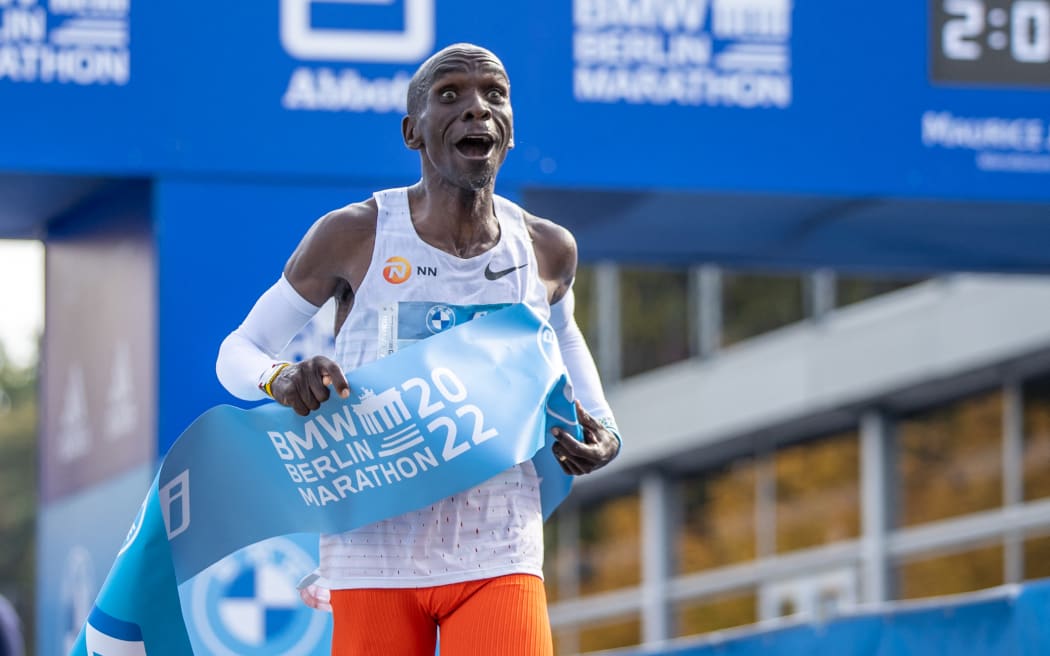
Eliud Kipchoge Photo: DPA Picture-Alliance via AFP
A century after the 1924 Paris Olympic men's marathon was won by Finn Albin Stenroos in two hours 41.22 minutes, next year's Games in the same city could feature the first official sub-two-hour time for the distance after 2023 saw more barriers smashed.
Kenya's double Olympic champion Eliud Kipchoge, who dipped under two hours with his unofficial Ineos challenge run in 2019, had dragged the record down to 2:01.09 in 2022.
But in October this year compatriot Kelvin Kiptum stunned the sport when the 23-year-old took over half a minute off the great man's mark to post 2:00.35 in Chicago to kick-start talk of when, rather than if, a legal sub-two would arrive.
That came two weeks after Ethiopia's Tigst Assefa astonishingly took well over two minutes off the women's record with 2:11.53 - a time that would have been the men's world record until 1967.
Talented and hard working though both champions are, the key component of their incredible times was unquestionably the latest developments in shoe technology that has made comparisons with earlier eras, even last decade, largely meaningless.
Kipchoge's performances opened the world's eyes to the condensed foam, carbon-plated super shoes Nike claimed could increase running efficiency (the amount of oxygen consumed per minute) by 4%.
Soon, every major race start line was awash with the trademark dayglow Nike Vaporfly and Alphafly.
Although the sport's governing body World Athletics tried belatedly to rein things in with their stack height regulations in 2020, the genie was out of the bottle and it did not take long for other companies to close the gap.
LATEST THEORY
Assefa ran Chicago in a new Adizero Adios Pro Evo 1 shoe, retailing at just under $500. It conforms to the 4cm height rule but, at 138 grams, weighs about 40% less than any previous Adidas racing shoe.
The latest theory around the shoes is that the carbon plates have only a limited effect and it is the "barely-there" weight, combined with the energy-return cushioning and "rockers", that prevents the fatiguing impact of previous thin-soled "racing flats" and allows athletes to maintain their optimum speed for longer.
Adidas say their newest shoes are enhanced with unique technology that challenges the boundaries of racing and highlight a foot rocker that they claim triggers forward momentum and further enhances running economy.
Nike is not about to hand over the baton just yet, however, as Kiptum achieved his record in yet another prototype, the Alphafly 3, also worn by women's Chicago champion Sifan Hassan, who took almost five minutes off her personal best with the second-fastest women's time ever of 2:13.44.
It was a similar story in several athletics events at the 2021 Tokyo Olympics where a combination of a fast track and revolutionary spikes produced some jaw-dropping records.
Such is the sport's seeming obsession with times rather than races - when did you last hear anyone discussing the time of the Epsom Derby horse race winner? - that the pressure to keep installing faster tracks and allowing ever more beneficial shoes shows no sign of abating.
The Paris Olympic athletics programme will undoubtedly produce magical moments but it is photographs of athletes posing by their world record time on the finish line clock that usually claim the front pages.
Once attention turns to the roads, particularly Berlin in September, such has been the astonishing progress in recent years that anything other than the magical first legal sub-two hour men's victory is likely to be widely greeted with something of an "oh well, maybe next year" shrug.
-Reuters

